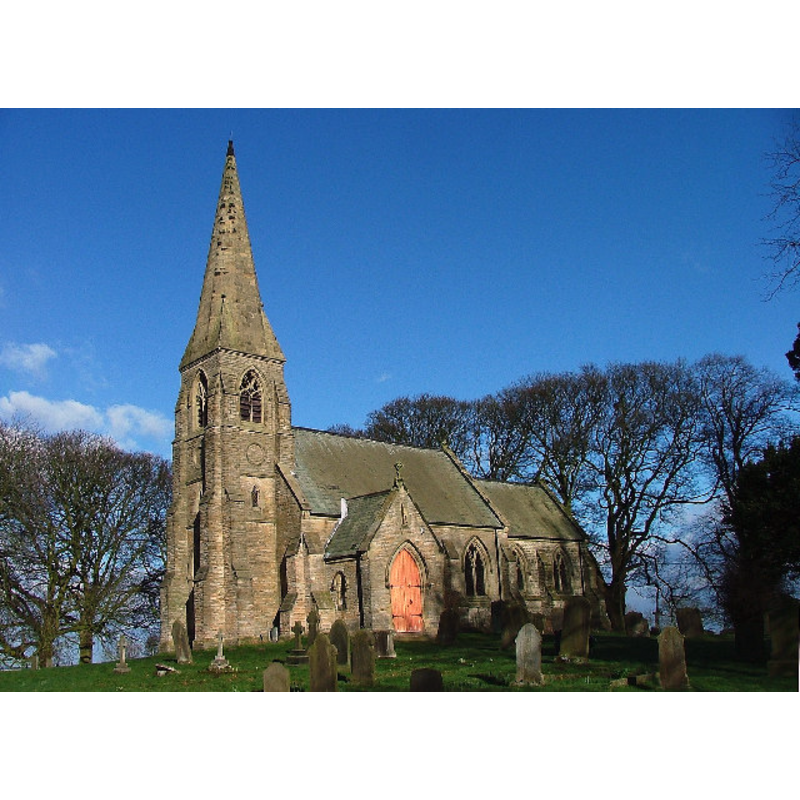Stainton / Great Stainton / Stainton in le Street / Stainton in Strata / Stanton le Strete / Staynton in the Streete

Image copyright © George Ford, 2005
CC-BY-SA-2.0
Results: 1 records
INFORMATION
FontID: 14007STA
Object Type: Baptismal Font1
Church/Chapel: Parish Church of All Saints
Church Patron Saints: All Saints
Church Location: Elstob Ln, Great Stainton, Darlington TS21 1NA, UK
Country Name: England
Location: Durham, North East
Directions to Site: Located 8 km SSW of Sedgefield, N of Darlington, W of Stockton
Ecclesiastic Region: Diocese of Durham
Historical Region: Stockton Ward
Font Location in Church: Inside the church, in the baptistery
Century and Period: 12th century (late?) [composite font?], Medieval [composite]
Font Notes:
Click to view
Noted in Mackenzie (1834): "the font is an octagonal bason of freestone". In Whellan (1856) and in Fordyce (1857): "The font is an octagonal basin of freestone". Noted in the Victoria County History (Durham, vol. 3, 1928): "The church of Stainton [...] was granted by Guy de Balliol in the late 11th or early 12th century to the Abbot of St. Mary's, York [...] The site is an ancient one and pre-Conquest fragments with interlaced patterns, probably part of a cross shaft, have been found. [...] rebuilt in 1876 in the style of the 14th century. [...] the old stone font, still in the church, is of late 12th-century date. It consists of a plain bowl on a moulded stem and base […] The font in use is modern". Ryder (October 2006) [www.durham.anglican.org/userfiles/file/Durham Website/Diocese and Admin/Care of Churches/Great Stainton All Saints Archaeological Assessment.pdf] [accessed 20 March 2012] notes: "The Font stands beneath the tower; it has an octagonal bowl, circular at the base, on a cylindrical shaft with two moulded rings, and a worn moulded base set on a 19th-century octagonal step. Hodgson ( 1912, 237-8, pl.f.p.234) sees it ‘as of the Pudseyan period’ (ie later 12th century) but the shaft almost has the look of an Anglo-Saxon baluster. In 1876 this font was removed to the vicarage garden, but returned and reinstalled in the church some years later. A Victorian font, probably contemporary with the church, stands at the north-east corner of the nave; it has an octagonal bowl with a sunk quatrefoil on each face." The entry for this church in Historic England [Listing NGR: NZ3356922173] notes: "2 stone fonts in baptistery: one medieval with moulded base, cylindrical stem and octagonal-plan cup-shaped bowl; the other late C19."
[NB: probably from the 1876 re-bulilding of this church].
COORDINATES
Church Latitude & Longitude Decimal: 54.59365, -1.4819
Church Latitude & Longitude DMS: 54° 35′ 37.14″ N, 1° 28′ 54.84″ W
UTM: 30U 598086 6050634
MEDIUM AND MEASUREMENTS
Material: stone, freestone
Font Shape: octagonal (mounted)
Basin Interior Shape: round
Basin Exterior Shape: octagonal
REFERENCES
Victoria County History [online], University of London, 1993-. Accessed: 2008-11-25 00:00:00. URL: https://www.british-history.ac.uk.
Fordyce, William, The History and Antiquities of the county palatine of Durham; comprising a condensed account of its natural, civil, and ecclesiastical history […], Newcastle, London and Edinburgh: A. Fullarton and Co., 1857
Hodgson, J.F., "Fonts and font covers", 6 (1912), Transactions of the Architectural and Archaeological Socety of Durham & Northumberland, 1912, pp. [256]; p. 237-238 and pl. 234
Mackenzie, Eneas, An historical, topographical, and descriptive view of the county palatine of Durham: comprehending the various subjects of natural, civil, and ecclesiastical geography, agriculture, mines, manufactures […], Newcastle-upon-Tyne: Mackenzie & Dent, 1834